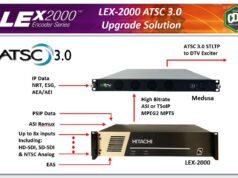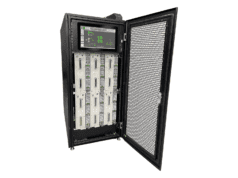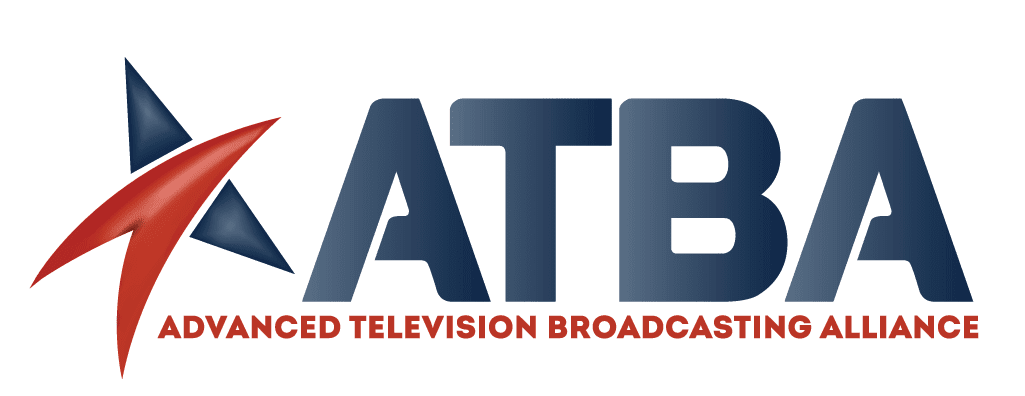The Incentive Auction Task Force and Media Bureau (Bureau) provide a summary of the status of the post-incentive auction transition and reimbursement program. We also announce an additional allocation from the TV Broadcaster Relocation Fund (the Reimbursement Fund or Fund) for low power television (LPTV) and TV translator (together LPTV/Translator) stations to increase the allocation for LPTV/Translator stations from 85 percent to 92.5 percent of verified estimates, which is consistent with the percentage currently allocated to other categories of entities eligible for reimbursement from the Fund.
Status Summary
• At the close of the incentive auction and beginning of the post-auction transition period on April 13, 2017, there were 987 full power and Class A stations reassigned (repacked) to new channels. The Commission established a 39-month period running until July 13, 2020, for repacked television stations to transition off of their pre-auction channels. The Commission determined that a phased construction schedule would facilitate efficient use of the resources necessary to complete the transition and adopted the Transition Scheduling Plan that assigned each repacked station to one of 10 phases. Each phase had a designated completion date by which stations assigned to that phase were required to vacate their pre-auction channels. The completion date for Phase 1 was November 8, 2018, and the subsequent phases had completion dates through the Phase 10 completion date on July 3, 2020. All of the repacked stations have vacated their pre-auction channels. Additionally, as of January 4, 2021, over 95 percent of the stations are operating on their final facilities. The remaining 41 stations have been granted special temporary authority and revised construction permit deadlines to enable them to continue pursuing completion of their final facilities. We are optimistic that these remaining stations will be able to meet their revised deadlines, and we will continue to monitor and work with them to ensure the continued success of the post-incentive auction transition.
• In addition to repacked stations, certain LPTV/Translator stations were displaced by the rebanding and repacking process. Over 2,000 such stations were granted construction permits in a Special Displacement Window to construct new facilities. Some of the LPTV/Translator stations were displaced and completed construction of displacement facilities early in the transition period. Others are working to meet their construction permit deadlines. FM radio spectrum was not subject to repacking, but some FM stations whose antennas are collocated on or near a tower supporting a repacked television station antenna incurred costs due to construction of repacked television facilities. Multichannel video programming distributors (MVPDs) also incurred costs to continue carrying the signals of repacked stations. Some FM stations and MVPDs have already incurred costs and a limited number may incur additional costs as repacked stations complete transitioning to final facilities.
• Congress provided $2.75 billion for the Reimbursement Fund in the Spectrum Act and Reimbursement Expansion Act (REA) to reimburse certain costs associated with the post-incentive auction transition and for the Commission to undertake education efforts for over-the-air television viewers. The Spectrum Act provided $1.75 billion to cover expenses incurred by full power and Class A television stations, and MVPDs, and the reimbursement program for those entities began in 2017. The REA expanded the program in 2018 to address the Fund’s apparent shortfall for full power and Class A stations and the lack of reimbursement funds for other categories of impacted broadcast stations. The REA appropriated a total of $1 billion, including $600 million in fiscal year 2018 and $400 million in fiscal year 2019. Of the $600 million appropriated in fiscal year 2018, the REA authorizes the Commission to use not more than $350 million to make reimbursements to full power and Class A stations and MVPDs, not more than $150 million to reimburse LPTV/Translator stations, not more than $50 million to reimburse FM stations, and $50 million for use by the Commission to fund its efforts to educate consumers about the reorganization of the broadcast television spectrum. The Commission stated that it would use the $400 million appropriated for fiscal year 2019 to reimburse full power, Class A, and MVPD entities before using any of those funds to reimburse LPTV/Translator and FM stations for eligible expenses. To date, participants in the Reimbursement Fund include 873 LPTV/Translator stations, 89 FM stations, and 181 MVPDs in addition to 957 repacked full power and Class A stations.
• The procedures used to disburse payments from the Fund enable us to timely process reimbursement requests, assure that only eligible expenses are paid, and spread available funds appropriately across all eligible entities. All entities participating in the reimbursement program were required to file estimates using the Reimbursement Form. The estimates were then reviewed for eligibility and reasonableness by Commission staff, who were assisted by a Fund Administrator experienced in television broadcast engineering and federal funds management. Thereafter, each entity received an initial allocation from the Fund based on a percentage of the entity’s verified cost estimates. The total allocation amount was calculated based in part on the total amount of estimated repacking expenses, as well as the amount of money available in the Reimbursement Fund for certain categories of entities. Allocations are made in tranches to ensure the Fund is allocated fairly and consistently. To date, full power, Class A, and FM stations and MVPDs have received allocations of 92.5 percent of each entity’s verified estimates and LPTV/Translator stations have received allocations of 85 percent of each entity’s verified estimates. As participating entities incur expenses, they submit invoices and supporting documentation using the Reimbursement Form. The Commission and Fund Administrator review the submissions for reasonableness and eligibility and, if approved, forward them to Treasury for payment. As of January 4, 2021, the total of all verified estimates in the Reimbursement Fund was over $2.19 billion, the total allocation was over $2.021 billion, over $1.437 billion had been forwarded to Treasury for payment, and over $55 million in invoices were at various stages of the review process. The program has received over 93,000 invoices in more than 31,000 separate submissions. Consistent with our experience in managing the Fund to date, we expect that reimbursement requests will continue to increase over the life of the Fund.
• We established staggered invoice filing deadlines to balance the burden on entities that have ongoing construction work against the need to meet the payment deadline, which requires that entities submit all documentation reflecting incurred costs to the Commission in a timely manner so the Fund Administrator and Commission staff have sufficient time to fully process all reimbursement requests and complete close out procedures prior to the July 3, 2023, deadline set by Congress, at which time unobligated funds must be rescinded. Repacked stations with phase completion dates in the first half of the Transition Scheduling Plan through phase 5 must submit all invoices for incurred expenses by October 8, 2021; those assigned completion dates in the second half of the Transition Scheduling Plan must submit by March 22, 2022; and LPTV/Translator, FM stations, and MVPDs must submit by September 5, 2022.
• The close-out process involves two steps: an interim stage and a final stage. When an entity has submitted all of its invoices and supporting documentation, it must use the Reimbursement Form to notify the Media Bureau. The Fund Administrator then provides the entity with a financial reconciliation. Once the entity has reviewed the financial reconciliation statement and made any necessary changes, to include returning any overpayments to the Fund, the entity must file an executed version of the financial reconciliation statement, after which the entity is issued an interim close-out letter. At an appropriate time before the end of the program, we may make a final allocation to reimburse entities up to the total amount of remaining incurred expenses. At that time, each entity will enter the final close-out stage and receive a final close-out letter. Any unobligated amounts in the Fund as of July 3, 2023, will be rescinded from the Fund, deposited into the Treasury, and dedicated for the sole purpose of deficit reduction. To date, 23 entities have completed interim close-out procedures.
• We have established procedures to ensure compliance with Fund guidelines. For example, entities may be selected for audits, data validations, and site visits at any time during the repack and reimbursement process, i.e., before or after the entity has completed its construction project; during the close-out period; or at a time thereafter. We remind participants that they must retain documents for a period ending 10 years after the date they receive their final payments from the Reimbursement Fund.
Additional Allocation for LPTV/Translator Stations
• As of the November 13, 2019, filing deadline for LPTV/Translator station eligibility submissions, we received 947 filings and, after careful review, determined that 844 satisfied the requirements to participate in the program. On March 26, 2020, we made an initial allocation of $87,071,619 to the 843 such stations that had submitted cost estimates as of that date, after verifying their estimates for sufficiency under our rules. At that time, the total estimates filed by all LPTV/Translator stations was $164,922,143, the total estimates for eligible stations was $143,633,411, and the verified estimates for eligible stations was $102,437,198. In announcing the initial allocation, we acknowledged the $150 million ceiling for reimbursement of this category of stations and that a number of factors could apply upward pressure on the total verified estimates. At the same time, we sought to promptly allocate funds to avoid hardship to stations, especially those that had already incurred some expenses. Therefore, the initial allocation was calculated at 85 percent of the station’s verified cost estimates, rather than the 92.5 percent made to other categories of participants in the reimbursement program, in order to provide an adequate reserve for potential future adjustments.
• Based on roughly 10 months of experience since the March 2020 initial allocation to LPTV/Translator stations, we are now more able to assess the upward pressures on the Reimbursement Fund from LPTV/Translator stations. Entities that, as of the time of the initial allocation, had not provided eligibility certifications or cost estimates or had not sufficiently documented their filings, have had additional time to remedy those deficiencies. Furthermore, participating entities have completed additional construction work on their displacement facilities and refined their submitted estimates. In addition, Commission staff, together with the Fund Administrator, now has the benefit of additional experience overseeing LPTV/Translator stations participation in the Fund with which to evaluate the likelihood of potential estimated cost adjustments, including analysis by discrete cost categories.
• The number of LPTV/Translator stations participating in the program has increased and there are currently 873 such eligible stations. Nevertheless, as of January 4, 2021, estimated cost figures for the overall LPTV/Translator category have decreased. Submitted cost estimates for LPTV/Translator stations as of that date totaled $135,385,485, verified estimates totaled $99,435,584, and the allocation to LPTV/Translator stations totaled $85,653,673. We find that under the current circumstances and considering the $150 million available to LPTV/Translator stations, sound federal fund administration principles allow us to increase the allocation to this category of stations from 85 percent to 92.5 percent of verified estimates, which percentage is consistent with the other categories of eligible entities in the reimbursement program. This will result in a total allocation for LPTV/Translator stations of $91,782,921 and a total allocation from the Reimbursement Fund for all eligible entities of over $2.028 billion.
• When the allocation adjustment is issued to the account for each individual LPTV/Translator station, the designated reimbursement representative for that station will receive a direct e-mail communication describing the precise allocation adjustment. After that email communication is received by the designated reimbursement representative, Authorized Agent(s) for LPTV/Translator stations may view the exact amount of the LPTV/Translator station’s individual allocations in the Auction Payments component of Commission Registration System (CORES) Incentive Auction Financial Module.
• We will continue to monitor closely the drawdown of the Fund as well as revisions to cost estimates to determine if additional allocations are warranted. It is therefore important that entities promptly submit invoices after incurring costs, and we strongly encourage them to do so. Furthermore, we strongly encourage entities to initiate close-out procedures as early as possible, and we emphasize that they need not wait for their assigned final invoice filing deadline to do so.
• For additional information or questions about the reimbursement process, please call the Reimbursement Help Line at (202) 418-2009, or e-mail [email protected].











